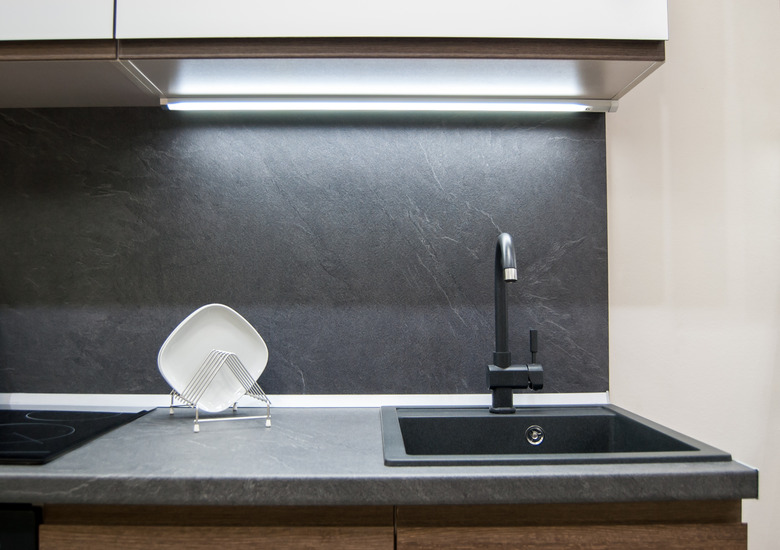How To Remove Laminate Countertops
Laminate countertops serve as an economical and durable option for kitchens and baths but may suffer chips and scratches over time, thanks to heavy use or impact from dropped objects. Whether your laminate countertops are looking worn or you simply want to update your space, you'll have to remove your existing countertops before replacing them with fresh ones. Proper removal of laminate countertops is crucial to protect your existing cabinets, sink and other surrounding surfaces from damage so these items can be reused.
Cut Through the Caulk
Cut Through the Caulk
Installers often use copious amounts of caulk and adhesive to secure laminate countertops in place. Before attempting to remove your countertops, use a sharp utility knife to cut through the caulk to separate the countertops from walls, cabinets and surroundings surfaces.
Start by cutting through caulk between the backsplash and the drywall, including along the sides. Next, cut through the caulk joining the edges of the countertops to the tiles or drywall on each side. Trace around the edge of the sink where it meets the countertop. Finally, cut any caulk or adhesive between the base cabinets and the underside of the countertop. This adhesive may extend across the entire length of the unit or may be found only in a few spots.
Separate Sink From Counter
Separate Sink From Counter
Turn off the water to your kitchen or bathroom sink and disconnect the drain line before attempting to remove the sink. If you have a top-mount sink, remove the screws connecting the sink to the countertop and then pull the sink out of the opening. If the sink is an undermount, use a pry bar to gently pry the sink away from the countertop. Once you've separated the sink from the countertop, you should be able to remove it through the cabinet door.
Separate Backsplash From Wall
Separate Backsplash From Wall
Many laminate countertops come with an integral backsplash. Once you've cut away any caulk connecting the backsplash to the wall, slip a pry bar between the backsplash and the top of the countertop. Pry it away carefully to avoid damaging the drywall. If the entire backsplash is glued to the wall, you may have to pry in this area as well, which will likely damage the drywall and require you to replace it later.
Search for and Remove Screws
Search for and Remove Screws
To disconnect the countertop from the base cabinets, open the cabinets and look for support brackets or screws. The screws will likely be in the corner support blocks of each cabinet, but they could be in other locations as well. Use your drill or a screwdriver to remove any screws you see. After all visible fasteners have been removed, slip a pry bar under one corner of the countertop and pry it loose.
If the installers used a great deal of adhesive to fasten the countertop in place, it may be easier to cut it into sections with a reciprocating saw, as recommended by Mees Distributors, Inc. You can then pry each section loose separately. Be sure to put on protective eyewear and heavy work gloves if you decide to use a reciprocating saw.
Replace Without Removing
Replace Without Removing
When replacing a laminate countertop, you may be tempted to remove only the laminate finish, leaving the substrate in place for refinishing. This tends to leave large divots in the substrate and is not recommended. Instead, remove and replace the entire countertop for the best possible results.
Alternatively, sand the surface of the laminate to roughen it; then lay your new laminate finish over the top using contact cement. Keep in mind that you'll need a great deal of skill and some special tools to properly finish edges and corners using this technique.
